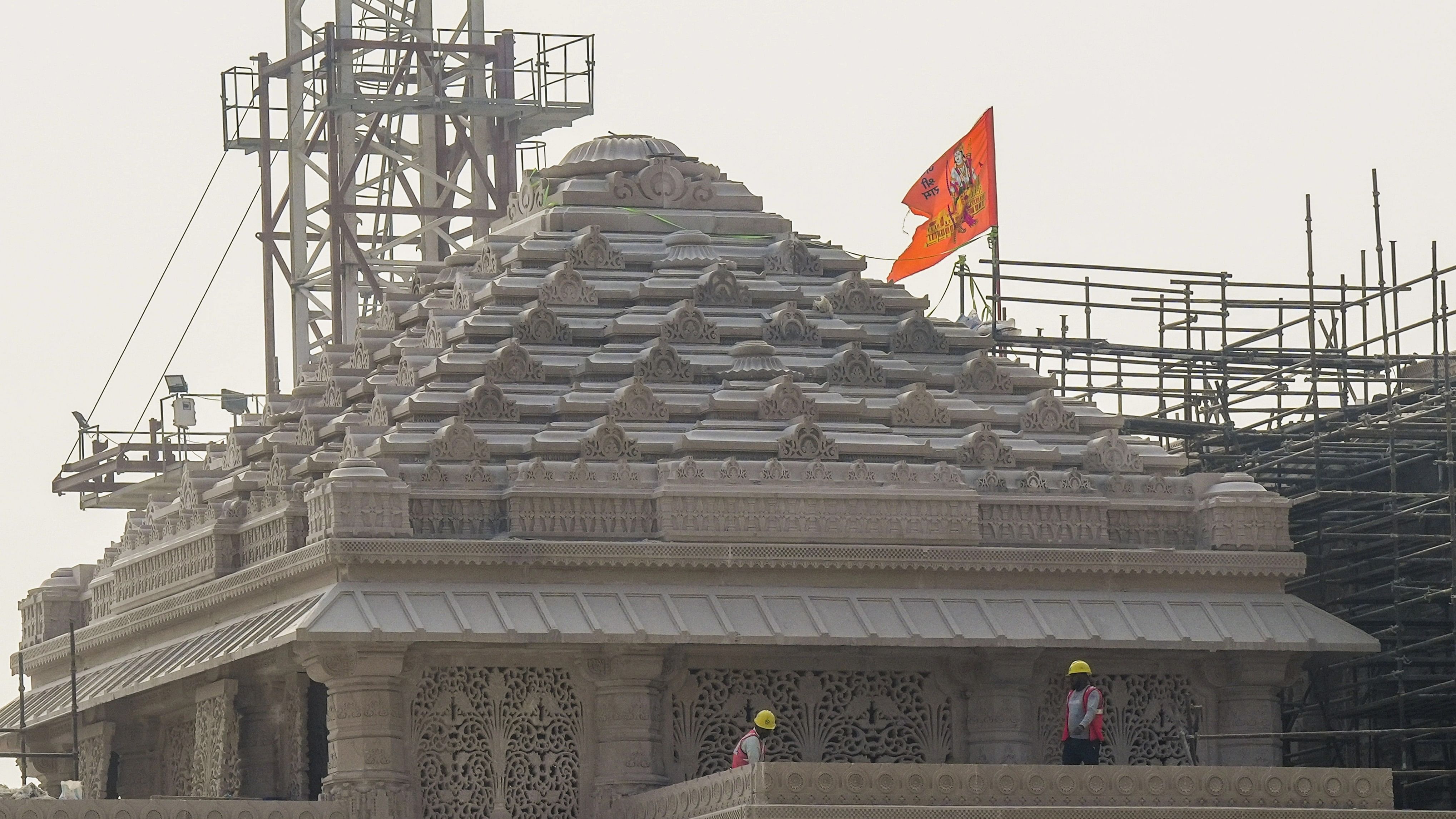
Under-construction Shri Ram Janmabhoomi temple during a media tour organised by Shri Ram Janmbhoomi Teerth Kshetra, in Ayodhya, Tuesday, Dec. 26, 2023.
Credit: PTI Photo
January 2024 will be a defining moment for the BJP under the prime ministership of Narendra Modi: the inauguration of the new Ram Temple in Ayodhya.
The BJP government has decided to remind us that genuine patriotism stems from taking pride in the construction of the Ram temple, which serves as an affirmation of our religious faith. Moreover, Lord Ram, as we all know, was an inspiring cultural symbol of India. It is believed that an estimated cost of around Rs 1,800 crore has been incurred in building this temple.
Even the Congress might avoid criticising Modi’s initiative to construct the Ram temple in Ayodhya due to political expediency. The reason is that the party cannot afford to alienate Hindu voters ahead of the upcoming general elections. While Rahul Gandhi claims to be a Janeudhari Hindu and a devotee of Lord Shiva, Kamal Nath attempted to project himself as a more devout follower of Hinduism than Shivraj Singh Chouhan during the recently concluded assembly elections in Madhya Pradesh. Ayodhya has remained a political hot potato for close to four decades ever since Rajiv Gandhi, as prime minister, ordered the unlocking of the small shrine to Ram at the disputed site. Since then, the issue has perpetually smoldered. Thus, this anticipated contest of religious assertions has underscored that the temple issue remains a persistent factor in the ever-fluctuating political landscape of our country. The construction of religious structures can serve as a distraction from addressing other important socio-economic problems.
In the late eighties, the Ram Janambhoomi Movement began to gather momentum that embedded itself into the national psyche. Over three decades ago, on December 6, 1992, the Babri Masjid was demolished, serving as a means to justify Hindu outrage against the excesses of Muslim rulers. The demolition was considered a significant triumph for Hindu nationalism. By his own admission, L K Advani wanted the mosque to go, but not in the manner in which it did. He described that fateful day as “the saddest day of my life.” The Communist leader Sitaram Yechury had said, “By mixing religion with politics, the BJP is taking the country back to mediaeval theocracy.’’ After the demolition, the campaign to build a temple on the site of the mosque ran out of steam. Ironically, the demolition didn’t give much political dividend to the BJP in the assembly elections that were held soon after this cataclysmic event.
However, construction of a Ram Temple in Ayodhya has been part of the BJP’s manifesto since 1989. Its 2009 manifesto maintained that there was an overwhelming desire among people to have a grand temple at the birthplace of Sri Ram. It was a foregone conclusion that, with general elections just a few months away, the BJP will finish the construction of the new temple in Ayodhya, to be inaugurated in Jan 2024.
What is of major concern is the tendency among political parties to mix religion with politics. Perhaps religion no longer remains a matter of private faith. Do we really require such a humongous and imposing temple edifice to prove our religiosity and faith in god? The shift towards expensive, high-tech constructions of religious structures might not necessarily explain genuine expressions of religiosity. These are nothing but a spectacle and a sheer waste of money in a country where the impoverished multitudes, crushed by penury and destitution, still struggle to make ends meet. Rabindranath Tagore, in his Bengali poem Deeno Daan (There is No God in the Temple), says that god would feel uncomfortable being in temples of brick and stone when the human temples are homeless and not cared for. Who can forget his immortal line, “While god waits for his temple to be built of love, man brings stones.”
The problem lies in an excessive emphasis on making religion the be-all and end-all of our existence—an ostentatious display of religious fervour and bravado aimed at proving our devoutness. Indeed, Hindus living in Islamic countries such as Bangladesh and Pakistan often experience life as second-class citizens, facing insecurity and uncertainty. However, in India, there is much better communal harmony as people from all communities coexist. Yet, the decision to construct a temple in Ayodhya on an extravagant scale is primarily intended to promote muscular and religious nationalism and nothing else. Our country is lagging behind in several indicators, like per capita income, and the percentage of women in the workforce. Patriarchal norms and the perpetuation of violence against women continue to be deeply ingrained. As long as politicians prioritise their political futures over national development, the construction of religious structures will continue at the expense of the country’s overall progress.
(The writer is a Delhi-based journalist)